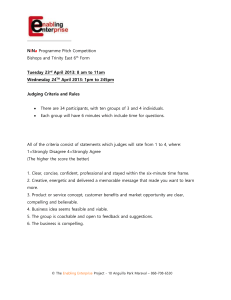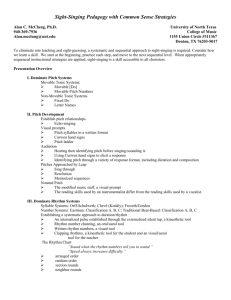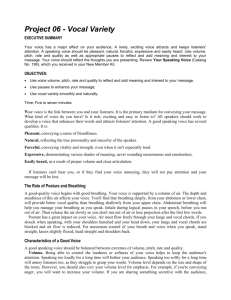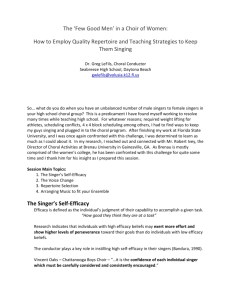SMART Goal Setting for Student Academic Progress Form
advertisement
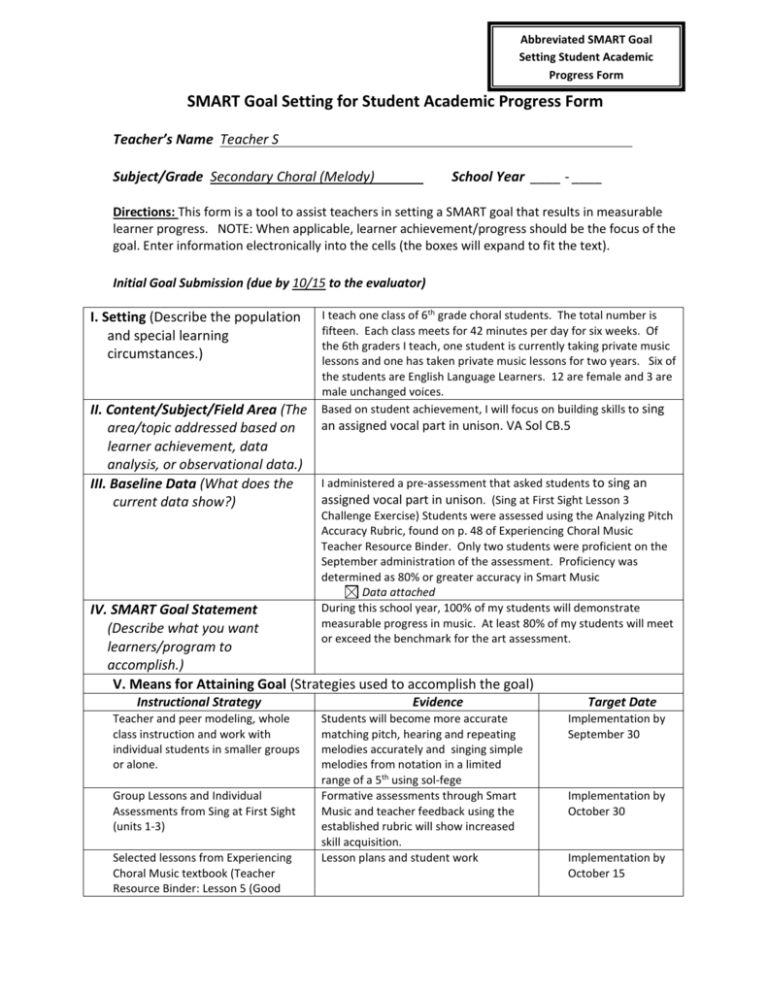
Abbreviated SMART Goal Setting Student Academic Progress Form SMART Goal Setting for Student Academic Progress Form Teacher’s Name Teacher S Subject/Grade Secondary Choral (Melody) School Year ____ - ____ Directions: This form is a tool to assist teachers in setting a SMART goal that results in measurable learner progress. NOTE: When applicable, learner achievement/progress should be the focus of the goal. Enter information electronically into the cells (the boxes will expand to fit the text). Initial Goal Submission (due by 10/15 to the evaluator) I. Setting (Describe the population and special learning circumstances.) I teach one class of 6th grade choral students. The total number is fifteen. Each class meets for 42 minutes per day for six weeks. Of the 6th graders I teach, one student is currently taking private music lessons and one has taken private music lessons for two years. Six of the students are English Language Learners. 12 are female and 3 are male unchanged voices. Based on student achievement, I will focus on building skills to sing II. Content/Subject/Field Area (The an assigned vocal part in unison. VA Sol CB.5 area/topic addressed based on learner achievement, data analysis, or observational data.) I administered a pre-assessment that asked students to sing an III. Baseline Data (What does the assigned vocal part in unison. (Sing at First Sight Lesson 3 current data show?) Challenge Exercise) Students were assessed using the Analyzing Pitch Accuracy Rubric, found on p. 48 of Experiencing Choral Music Teacher Resource Binder. Only two students were proficient on the September administration of the assessment. Proficiency was determined as 80% or greater accuracy in Smart Music Data attached During this school year, 100% of my students will demonstrate measurable progress in music. At least 80% of my students will meet or exceed the benchmark for the art assessment. IV. SMART Goal Statement (Describe what you want learners/program to accomplish.) V. Means for Attaining Goal (Strategies used to accomplish the goal) Instructional Strategy Teacher and peer modeling, whole class instruction and work with individual students in smaller groups or alone. Group Lessons and Individual Assessments from Sing at First Sight (units 1-3) Selected lessons from Experiencing Choral Music textbook (Teacher Resource Binder: Lesson 5 (Good Evidence Students will become more accurate matching pitch, hearing and repeating melodies accurately and singing simple melodies from notation in a limited range of a 5th using sol-fege Formative assessments through Smart Music and teacher feedback using the established rubric will show increased skill acquisition. Lesson plans and student work Target Date Implementation by September 30 Implementation by October 30 Implementation by October 15 Cheer) p. 34, Vocal Development pp 87-90, What’s My Vocal Range p. 45, Choral & Vocal Warm Ups p. 182, My Voice, My View p. 192, Pitch Tone Ladder p. 193 ) Teacher S Baseline, Mid-Year, and End of Year Data Music Assessment Pitch Accuracy September 40% October 42% November 83% Benchmark for Music Assessment: 80% of students will be proficient as indicated by a score of 75% or greater in SmartMusic or at 3 or higher on the rubric. Teacher Pitch Accuracy Date, Rating & Comments 4/88-100% Very Accurate: Pitch was precise and in tune during the performance. Pitch was well defined, centered and very consistent throughout. 3/75-87% Mostly Accurate: Most pitches were precise and in tune. Pitch was generally defined, centered and consistent throughout. 2/50-74% Somewhat Accurate: Pitches were occasionally precise and in tune. Pitch was occasionally defined and consistent throughout. 1/>50% Not Accurate: Pitches were not precise and in tune. Pitch was not defined and centered & was inconsistent throughout. 0 Novice: Did not attempt or finish




